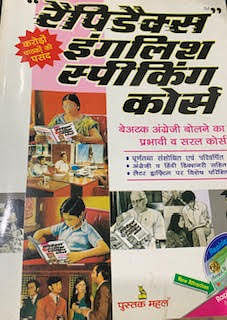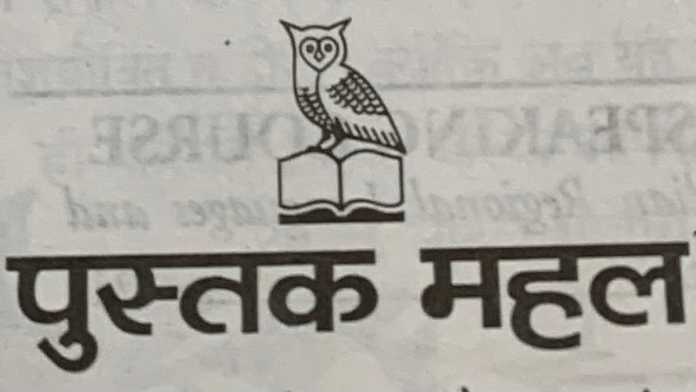These are the questions that megastar Amitabh Bachchan has still not asked in his popular show Kaun Banega Crorepati. But if he did, he would surely get a lot of audience traction.
Q1. Name a self help guidebook that cricketer Kapil Dev endorsed and then he began to be known by the name of this book?
Q2. Name the most commonly purchased guidebook by those appearing for UPSC interviews?
The answer to these questions is embedded in this story. But let’s begin at the beginning.
In the 1930s, when education was scarce, Moolchand Gupta was the first teenager in his village Kasan near present-day Gurgaon to complete his matriculation. With no access to further studies, he decided to turn his passion for books into his livelihood. It was a risky gamble because there were hardly any readers. Spending money on books was the last priority for the impoverished masses of pre-independence India.
Moolchand started his first shop at Badshah Bulla near Chawri Bazar, supplying to the existing demand of religious books like Ramayana, Gita, Sukh Sagar, Panchang, Aarti Sangreh, or collection of local hymns, Mashhoor Alam Jantri and Mufid Alam Jantri, or local lunar calendars of significant dates, Gorakhnath Sahitya, and Puranmal Sahitya of folk stories. This turned out to be a trickling revenue stream. Most people were so reverent of sacred books that one copy could last a lifetime, and was even passed down to the next generation.
Moolchand and his two brothers were thrashing around in shallow waters when a brainwave struck them. Sitting at their shop, they realised that almost all of their customers were young unemployed men seeking jobs. They began a new and unprecedented genre — the how-to manuals of various businesses.
There were almost no skilled people in those early days of newly independent India. The three brothers came across Narendra Nath, a self-taught maverick engineer based in Sonipat. He would orally dictate how to fix things like bicycles, transistors, water pumps, tractors, and electric poles.
This data was handwritten, tabulated, and brought to Sita Ram Bazar’s Yadav Printing Press, where all words were composited by hand and each page was printed on a mechanical printing press. Technical drawings of circuits and wire layouts were copied from foreign books and added as the manual’s last pages. This bunch was then delivered to the highly skilled artisans stationed around Jama Masjid to be hand stitched and bound. This is how laborious it was to create one single book in those days.
Hungry for the opportunity to start small skill-based businesses, a swarm of young unemployed men would seize these manuals and open small enterprises in their own towns and villages to provide the much-needed services. Hence, the shop’s name, ‘Dehati Pustak Bhandar’, or the Villagers Book Store, became a memorable brand with a strong recall across north India.
Moolchand’s elder son, Rajendra, recounts, “By now, people would frequently remark that Dehati Pustak Bhandar contained information that could not be found elsewhere. Even celebrities like writer-director Manoj Kumar visited the shop while he was working on his film Purab Aur Paschim.”
Meanwhile, the oddball self-trained engineer Nath eventually wrote 75 manuals on various skills and all of his educational books became overnight hits. Until now, the Gupta brothers lived in the congested Badshah Allah area near Sheesh Mahal, which housed many Kashmiri migrants, including Kamala Nehru’s family. With each new hit title, the family aspirations rose and they moved to a large bungalow in Delhi’s Roop Nagar.
Growing prosperity and the rising ambitions of the next generation caused a drift among the founders. Dhoomimal, the younger brother, inherited the by now-iconic Dehati Pustak Bhandar, and Moolchand had to start from scratch.
The new turn
Moolchand launched a new venture from Daryaganj called ‘Pustak Mahal’, and against the advice of many, included an owl in the logo as a symbol of wisdom. Back at the bottom, Moolchand’s two sons, Rajendra and the younger one, Ramavtar, sat listlessly at the new shop, which saw few footfalls. There was much mirth and ridicule towards ‘Ullu wala mahal’ — the palace with an owl on it.
Restive for success, Ramavtar began writing a new manual that was aimed at teaching people how to speak English. Rajendra had just graduated from Delhi University and was keen to give this book a new identity. Instead of the family’s famous small-sized ‘kunji’ (cliff notes), he opted for a large-size glossy format. In the absence of expensive models, he photographed his family members to portray a typical middle-class Indian family and placed them on the cover page.

Instead of a Hindi title, he went for an English name – Rapidex English Speaking Course with subtitle reading Farratedar English Bolo (speak fluent English).
There was a pitched battle within Pustak Mahal on all these landmark changes. A super expensive full page advertisement in Dharamyug, the bestselling Hindi weekly magazine of that time, was released. The Pustak Mahal team of workers, collaborators, and owners began to watch the market with bated breath. But there was complete silence and no response. All the efforts and expense began to seem like a big blunder.
A fortnight later, the Gupta family got a call from the local post office asking them to collect their mail. They were astounded to find a huge sack full of letters containing thousands of book orders. It was a jackpot! Rapidex English Speaking Course became a runaway success with millions of copies sold. A ‘sticky brand’ was born.
Ramavtar said, “Even with no formal marketing and advertising, such was the fanbase that when this book was spotted on the coffee table of then President Giani Zail Singh, news articles remarked on his rustic simplicity, which endeared him to the common man.”
For four decades, this book has been a bestseller and published in numerous Indian and international languages — a clear indication that the owl in the logo has grabbed the book and taken it on a long flight.
This article is a part of a series called BusinessHistories exploring iconic small and family-run businesses in India that have endured tough times and changing markets. Read all articles here.
(Edited by Tarannum Khan)



